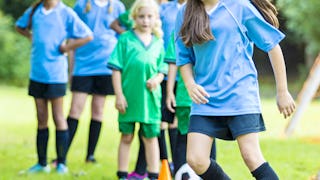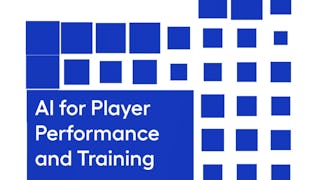Course 5 examines the role of anthropometrics, biomechanics and motor skills in human performance as well as key factors that influence how humans produce and sense motion, and how these can be applied to training and testing performance.


您将学到什么
You will be introduced to types of controls, be able to understand and identify key factors that influence how humans produce & sense motion.
您将获得的技能
要了解的详细信息

添加到您的领英档案
4 项作业
了解顶级公司的员工如何掌握热门技能

积累特定领域的专业知识
- 向行业专家学习新概念
- 获得对主题或工具的基础理解
- 通过实践项目培养工作相关技能
- 获得可共享的职业证书

该课程共有5个模块
This course explores anthropometry, biomechanics, and motor skills. You will learn about measuring human body dimensions and characteristics, known as anthropometrics, and how these measurements are used in design. The course covers factors influencing motion production and perception, including open- and closed-loop control and stimulus-response compatibility. You will also explore the applications of motion-tracking technologies in training and testing human performance.
涵盖的内容
1个视频1篇阅读材料
Module 1 explores anthropometry and ergonomics, covering the measurement of human body dimensions and the importance of anthropometric data in fields like product design and workspace layout. The module also focuses on ergonomics, the science of designing products and environments to fit human capabilities and enhance safety and efficiency. You will learn about the principles and goals of ergonomics, as well as ergonomic design considerations for creating user-centered products and workspaces.
涵盖的内容
3个视频6篇阅读材料1个作业1个讨论话题
In Module 2, we dive into the realm of ergonomics research, exploring various applications in different settings. We begin with Lesson 1, focusing on office design and exercise, aiming to create the perfect ergonomic workspace. Moving on to Lesson 2, we shift our attention to factories and industrial settings. In Lesson 3, we turn our focus to the healthcare sector.
涵盖的内容
3个视频6篇阅读材料1个作业1个讨论话题
In this module, we explore the field of biomechanics, which focuses on studying the mechanics and movement of the human body. We will cover various aspects of biomechanics, including its definition, applications in different domains, and methods for analyzing human movement. By the end of this module, you will have a solid understanding of biomechanics principles and how they are used to study and analyze human motion.
涵盖的内容
3个视频6篇阅读材料1个作业1个讨论话题
Module 4 focuses on the practical applications of biomechanics in various fields. It explores how biomechanics can be utilized to optimize performance, prevent injuries, and enhance movement in sports, rehabilitation, ergonomics, and other contexts.
涵盖的内容
3个视频8篇阅读材料1个作业
获得职业证书
将此证书添加到您的 LinkedIn 个人资料、简历或履历中。在社交媒体和绩效考核中分享。
位教师

从 Mechanical Engineering 浏览更多内容
 状态:免费试用
状态:免费试用University of California San Diego
 状态:免费试用
状态:免费试用National Academy of Sports Medicine
 状态:预览
状态:预览University of Florida
 状态:免费试用
状态:免费试用Real Madrid Graduate School Universidad Europea
人们为什么选择 Coursera 来帮助自己实现职业发展




常见问题
To access the course materials, assignments and to earn a Certificate, you will need to purchase the Certificate experience when you enroll in a course. You can try a Free Trial instead, or apply for Financial Aid. The course may offer 'Full Course, No Certificate' instead. This option lets you see all course materials, submit required assessments, and get a final grade. This also means that you will not be able to purchase a Certificate experience.
When you enroll in the course, you get access to all of the courses in the Specialization, and you earn a certificate when you complete the work. Your electronic Certificate will be added to your Accomplishments page - from there, you can print your Certificate or add it to your LinkedIn profile.
Yes. In select learning programs, you can apply for financial aid or a scholarship if you can’t afford the enrollment fee. If fin aid or scholarship is available for your learning program selection, you’ll find a link to apply on the description page.
更多问题
提供助学金,



